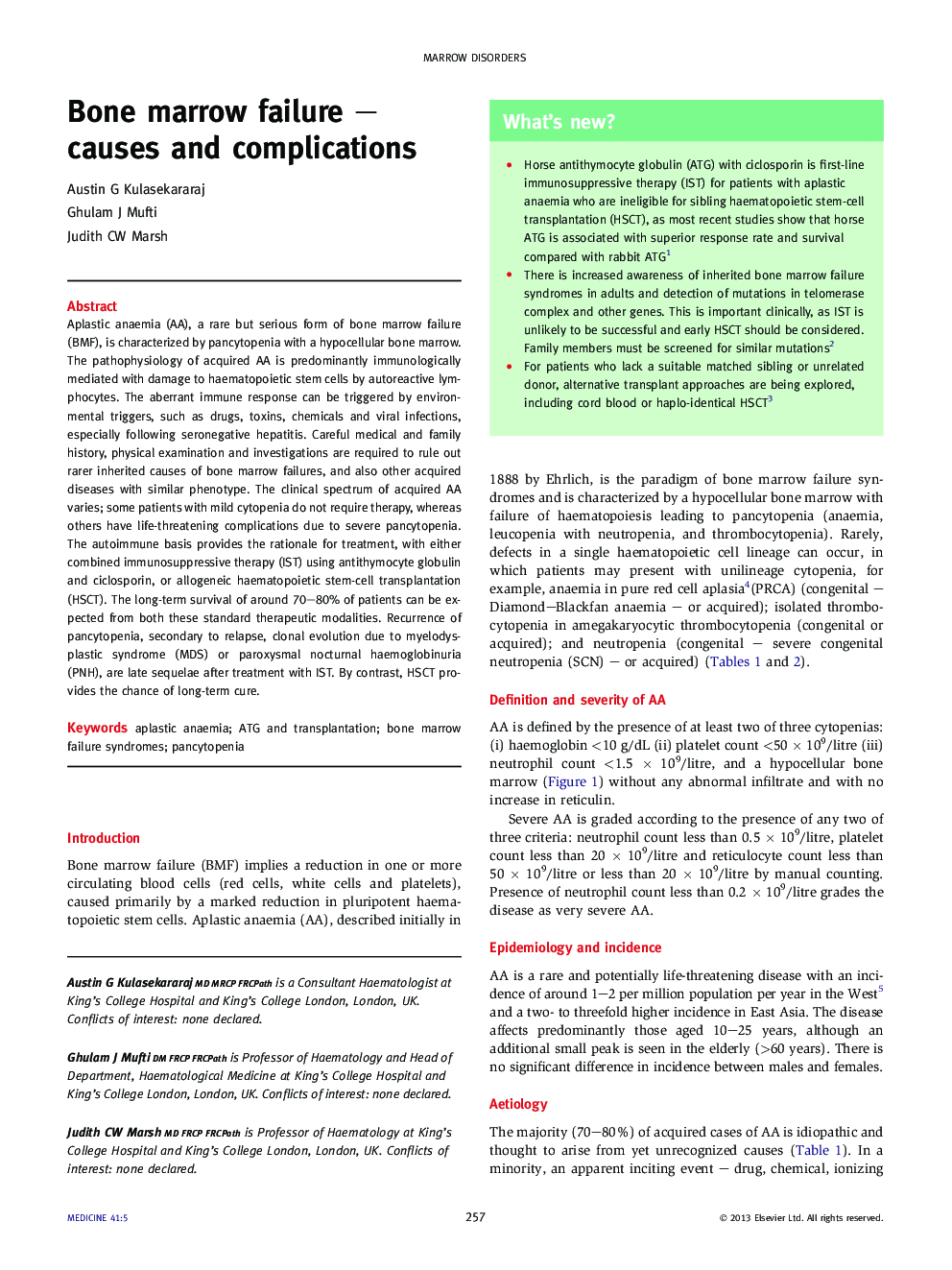| کد مقاله | کد نشریه | سال انتشار | مقاله انگلیسی | نسخه تمام متن |
|---|---|---|---|---|
| 3803875 | 1244973 | 2013 | 4 صفحه PDF | دانلود رایگان |

Aplastic anaemia (AA), a rare but serious form of bone marrow failure (BMF), is characterized by pancytopenia with a hypocellular bone marrow. The pathophysiology of acquired AA is predominantly immunologically mediated with damage to haematopoietic stem cells by autoreactive lymphocytes. The aberrant immune response can be triggered by environmental triggers, such as drugs, toxins, chemicals and viral infections, especially following seronegative hepatitis. Careful medical and family history, physical examination and investigations are required to rule out rarer inherited causes of bone marrow failures, and also other acquired diseases with similar phenotype. The clinical spectrum of acquired AA varies; some patients with mild cytopenia do not require therapy, whereas others have life-threatening complications due to severe pancytopenia. The autoimmune basis provides the rationale for treatment, with either combined immunosuppressive therapy (IST) using antithymocyte globulin and ciclosporin, or allogeneic haematopoietic stem-cell transplantation (HSCT). The long-term survival of around 70–80% of patients can be expected from both these standard therapeutic modalities. Recurrence of pancytopenia, secondary to relapse, clonal evolution due to myelodysplastic syndrome (MDS) or paroxysmal nocturnal haemoglobinuria (PNH), are late sequelae after treatment with IST. By contrast, HSCT provides the chance of long-term cure.
Journal: Medicine - Volume 41, Issue 5, May 2013, Pages 257–260